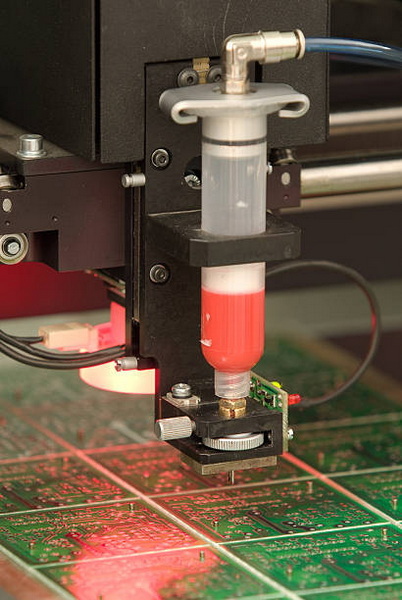Content Menu
● Understanding SMT and Splicing
>> What is SMT?
>> What is Splicing?
● The Role of SMT Splice Tools
● Benefits of Using an SMT Splice Tool
● How SMT Splice Tools Work
● Implementing an SMT Splice Tool in Production
● Case Studies Demonstrating Improved Efficiency
● Challenges and Considerations
● Conclusion
● FAQ
>> 1. What types of materials can be spliced using an SMT splice tool?
>> 2. How does using an SMT splice tool affect product quality?
>> 3. Is operator training necessary when implementing an SMT splice tool?
>> 4. Can an SMT splice tool be integrated into existing manufacturing processes?
>> 5. What are some common challenges when adopting an SMT splice tool?
In the fast-paced world of electronics manufacturing, efficiency is paramount. As companies strive to increase output while minimizing costs, they often turn to innovative tools and techniques. One such tool that has gained significant attention in recent years is the SMT splice tool. This article explores the advantages of using an SMT splice tool, its impact on production efficiency, and how it can transform manufacturing processes.

Understanding SMT and Splicing
What is SMT?
Surface Mount Technology (SMT) is a method used to mount electronic components directly onto the surface of printed circuit boards (PCBs). Unlike traditional through-hole technology, where components are inserted into holes in the PCB, SMT allows for a more compact design and higher component density. This technology has revolutionized electronics manufacturing by enabling smaller devices with enhanced performance.
What is Splicing?
Splicing refers to the process of joining two pieces of material together. In the context of SMT, splicing typically involves connecting two rolls of soldering materials or other components seamlessly. This process is crucial in maintaining continuous production runs without interruptions caused by material changes.
The Role of SMT Splice Tools
SMT splice tools are specialized instruments designed to facilitate the splicing process in electronic manufacturing. These tools allow operators to join different materials quickly and efficiently, minimizing downtime during production. By providing a reliable way to connect materials, SMT splice tools can significantly enhance overall production efficiency.
Benefits of Using an SMT Splice Tool
The implementation of an SMT splice tool offers numerous benefits that contribute to improved production efficiency:
- Reduced Downtime: One of the most significant advantages of using an SMT splice tool is the reduction in downtime during production. Traditional methods of changing rolls or materials often require lengthy setup times. An SMT splice tool allows operators to splice new rolls quickly, ensuring that production lines remain operational.
- Improved Quality Control: An effective SMT splice tool ensures consistent and reliable connections between materials. This consistency leads to fewer defects and rework, enhancing overall product quality. High-quality splices reduce the risk of failures in the final product, which can be costly for manufacturers.
- Cost Savings: By minimizing downtime and improving quality, SMT splice tools can lead to substantial cost savings over time. Reduced waste from defective products and lower labor costs associated with extended setup times contribute to a more efficient production process.
- Enhanced Flexibility: In today's market, manufacturers must be agile and responsive to changing demands. SMT splice tools provide the flexibility needed to switch between different materials or production runs without significant delays. This adaptability allows companies to meet customer needs more effectively.
- Streamlined Processes: The use of an SMT splice tool can help streamline various processes within a manufacturing operation. By integrating splicing into the workflow, companies can create a more efficient production line that minimizes bottlenecks and maximizes output.
How SMT Splice Tools Work
An SMT splice tool typically consists of several components designed to facilitate the splicing process:
- Cutting Mechanism: This part of the tool is responsible for cutting the materials being spliced. It ensures clean cuts that promote better connections between the two pieces.
- Alignment Guides: These guides help position the materials accurately during splicing. Proper alignment is crucial for creating strong connections that can withstand the rigors of manufacturing processes.
- Adhesive Application: Many SMT splice tools include mechanisms for applying adhesives or bonding agents during the splicing process. This feature enhances the strength and durability of the splice.
- Pressure Mechanism: After aligning and cutting the materials, a pressure mechanism ensures that they are pressed together firmly. This step is essential for achieving a reliable bond between the two pieces.
Implementing an SMT Splice Tool in Production
To maximize the benefits of an SMT splice tool, manufacturers should consider several factors when implementing this technology:
- Training Operators: Proper training is essential for operators who will be using the SMT splice tool. Understanding how to use the tool effectively can significantly impact its performance and overall production efficiency.
- Regular Maintenance: Like any piece of equipment, regular maintenance is crucial for ensuring that an SMT splice tool operates at peak efficiency. Routine checks and servicing can prevent breakdowns and extend the lifespan of the tool.
- Integration with Existing Processes: Manufacturers should evaluate how an SMT splice tool fits into their current production processes. Seamless integration can help minimize disruptions and maximize productivity gains.

Case Studies Demonstrating Improved Efficiency
Several case studies illustrate how implementing an SMT splice tool has led to improved production efficiency in various manufacturing settings:
1. Electronics Manufacturer A: After integrating an SMT splice tool into their production line, Manufacturer A reported a 30% reduction in downtime associated with material changes. The ability to quickly switch between different rolls allowed them to respond more effectively to fluctuating demand.
2. Consumer Electronics Company B: Company B experienced a significant drop in defect rates after adopting an SMT splice tool. The consistent quality achieved through reliable splices reduced rework costs by 25%, leading to improved profit margins.
3. Automotive Supplier C: By utilizing an SMT splice tool, Supplier C was able to streamline their assembly line processes. They reported a 20% increase in overall output due to reduced setup times and enhanced flexibility in material handling.
Challenges and Considerations
While there are numerous benefits associated with using an SMT splice tool, manufacturers should also be aware of potential challenges:
- Initial Investment Costs: The upfront costs associated with purchasing and implementing an SMT splice tool can be significant. Manufacturers must weigh these costs against potential long-term savings in efficiency and quality.
- Learning Curve: Operators may face a learning curve when adapting to new technology. Providing adequate training and support is essential for overcoming this challenge.
- Compatibility Issues: Not all materials may be suitable for splicing with every type of SMT splice tool. Manufacturers need to ensure compatibility between their existing materials and new tools before implementation.
Conclusion
In conclusion, an SMT splice tool can significantly improve production efficiency within electronics manufacturing environments. By reducing downtime, enhancing quality control, providing cost savings, increasing flexibility, and streamlining processes, these tools offer valuable benefits that can transform operations. While challenges exist regarding initial investment costs and operator training, the long-term advantages often outweigh these hurdles.
As manufacturers continue to seek ways to optimize their operations amidst growing competition and demand for high-quality products, adopting innovative solutions like SMT splice tools will play a crucial role in achieving success in today's dynamic market landscape.

FAQ
1. What types of materials can be spliced using an SMT splice tool?
An SMT splice tool can typically handle various soldering materials used in electronics manufacturing, including different types of wires, cables, and adhesive films designed for surface mount applications.
2. How does using an SMT splice tool affect product quality?
Using an SMT splice tool enhances product quality by ensuring consistent connections between materials, reducing defects during manufacturing processes which leads to fewer reworks and higher reliability in final products.
3. Is operator training necessary when implementing an SMT splice tool?
Yes, operator training is essential when implementing an SMT splice tool as it ensures that personnel understand how to use it effectively and safely while maximizing its potential benefits on production efficiency.
4. Can an SMT splice tool be integrated into existing manufacturing processes?
Absolutely! An SMT splice tool can be integrated into existing manufacturing processes with proper planning and evaluation to ensure minimal disruptions while enhancing overall productivity.
5. What are some common challenges when adopting an SMT splice tool?
Common challenges include initial investment costs for purchasing equipment, potential learning curves for operators adapting to new technology, and ensuring compatibility between existing materials and new tools.




















